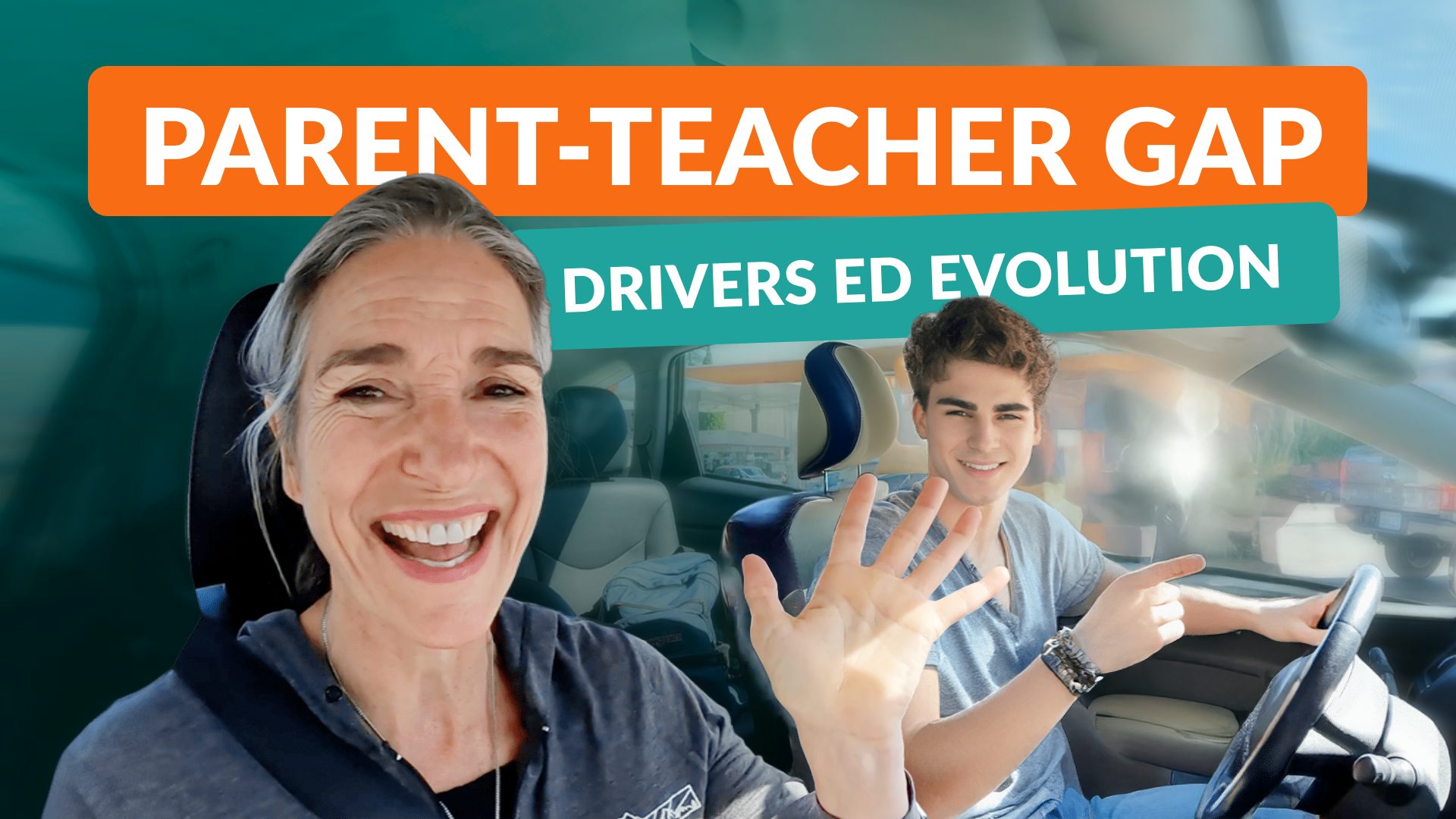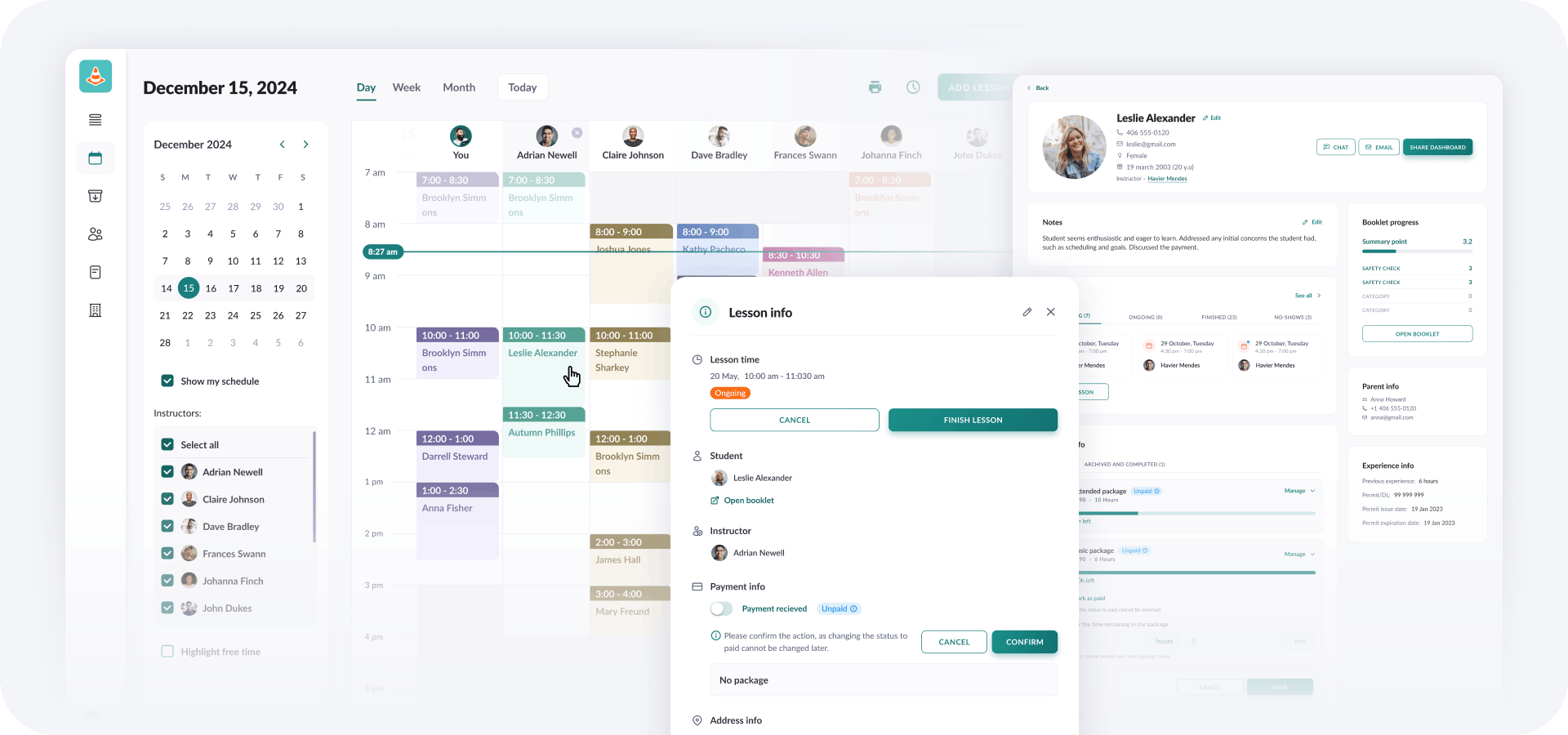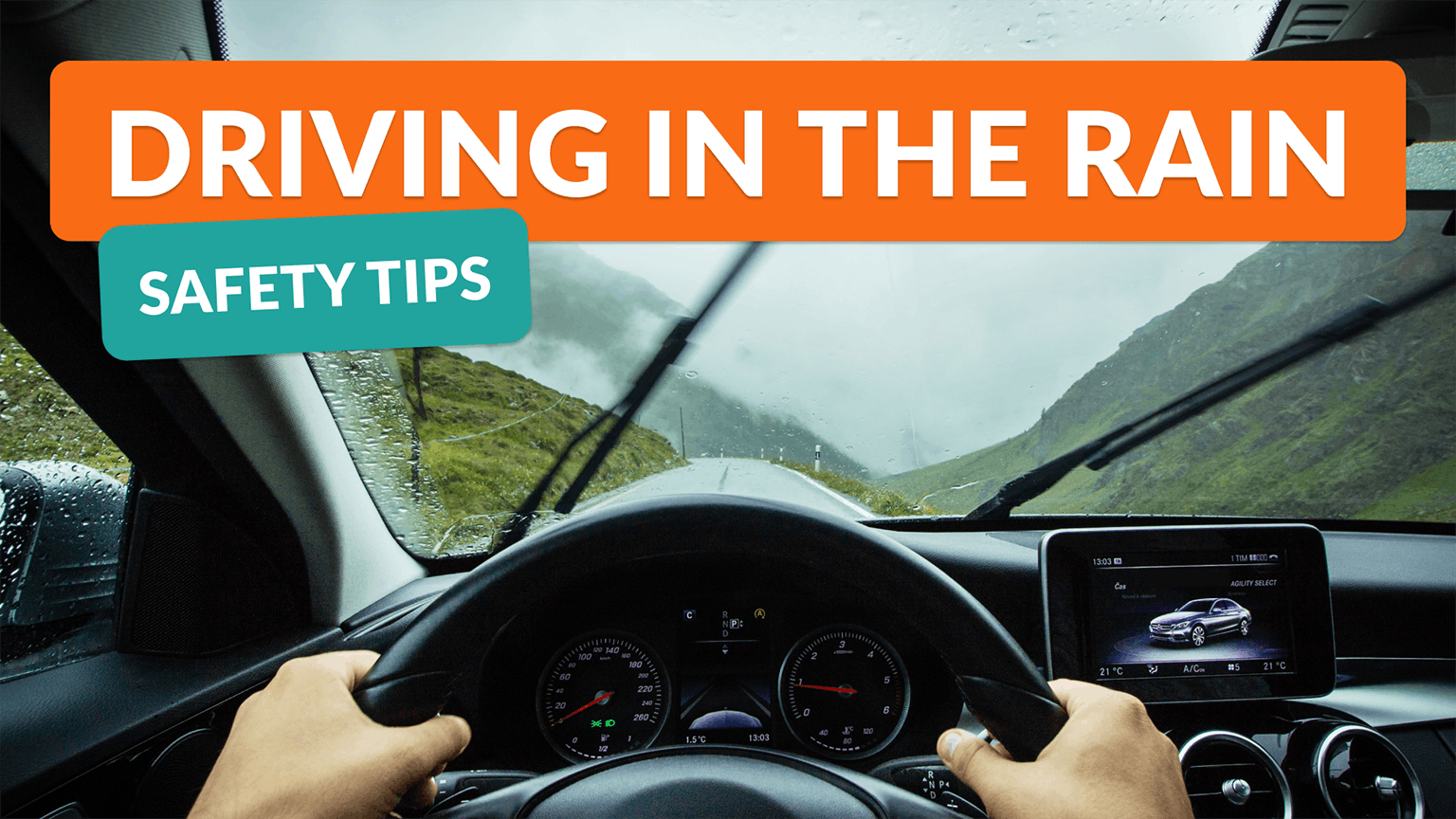
Safety Tips for Driving in the Rain
This article covers:
- Rain-related hazards and how to respond to them
- The best tips for driving safely
- How to handle breakdowns and accidents
Driving in the Rain: Risks and Solutions

In rainy weather, reduce your speed by at least 5-10 mph below the posted speed limit on urban roads, and by 10-15 mph on highways. Increase the following distance to 6 seconds. Remember to brake gently, make gradual lane changes, and be extra cautious at intersections. These safety tips apply to all rain-driving situations, complementing the guidance below.
Hydroplaning
Hydroplaning happens when your tires lose traction with the road due to a layer of water, making your vehicle slide uncontrollably. Heavy rain, high speeds, and worn tires commonly cause it. The consequences can range from loss of steering control and skidding to severe accidents.
Recognition
You’ll feel your steering become light or unresponsive, and your vehicle may drift sideways.
Reaction
- Ease off the Accelerator: Don’t brake abruptly.
- Steer Gently: Turn your wheel in the direction you want to go, but avoid oversteering.
- Wait it Out: Let your car slow down until you feel the tires regain traction.
Limited Visibility
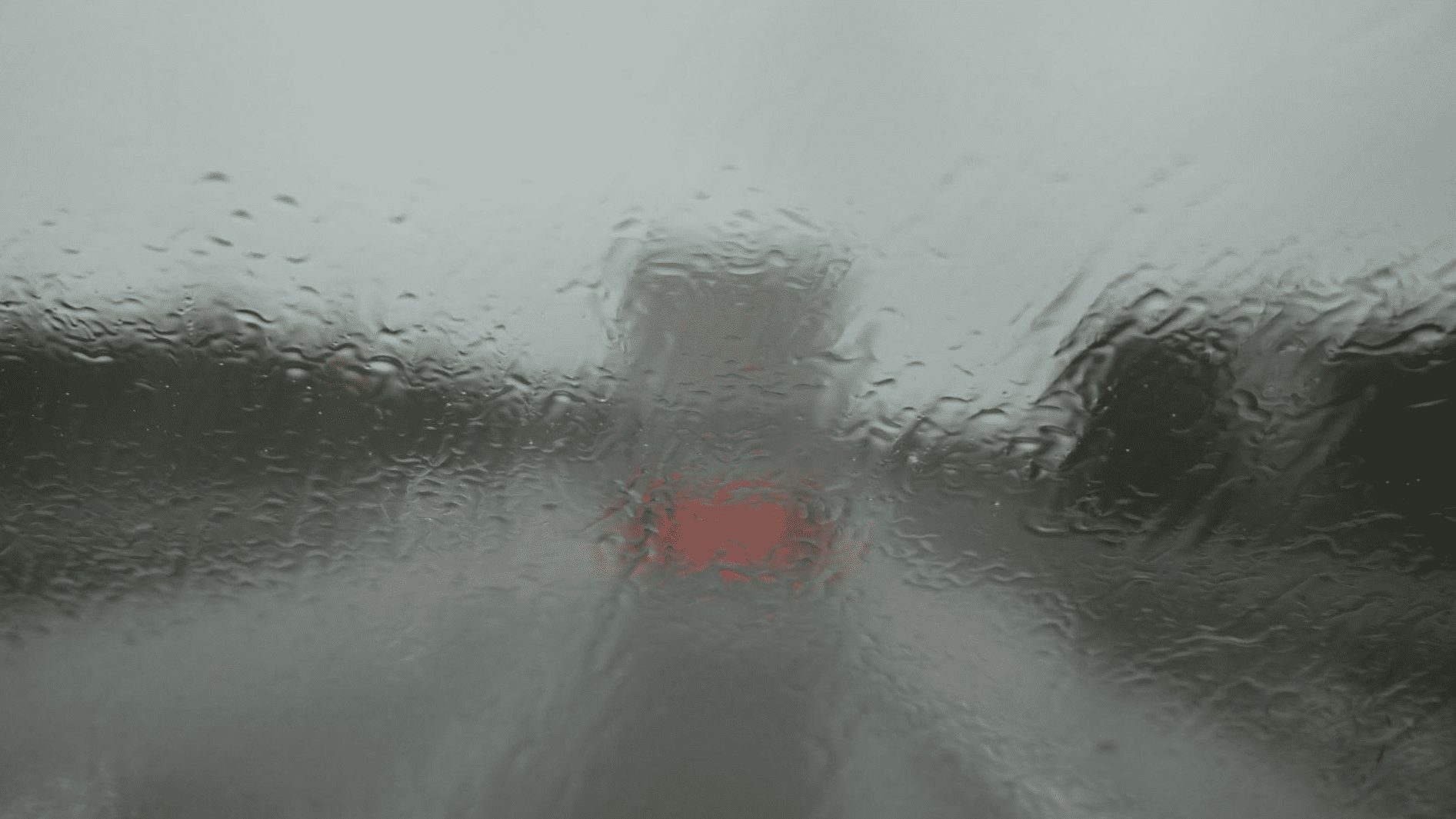
Reduced visibility will likely prevent you from seeing road hazards, traffic signals, and other vehicles in time to react safely.
Reaction
- Keep Windows and Mirrors Clear: Regularly use defoggers and wipers.
- Use Tail Lights, but Not Brights: Turn on the tail lights to help outline all four car’s corners. Avoid brights when you can, as the raindrops reflect the light into your eyes and obscure your vision.
- Turn On Your Defroster: You can go from a clear window to dense fog in seconds. Your defroster will help offset or avoid the problem altogether.
- Avoid Large Vehicles: Stay away from large trucks and buses to avoid heavy sprays that can further reduce visibility.
Slippery Surfaces

Wet roads significantly increase braking distances. The slippery surface reduces tire traction, making it harder to stop quickly and potentially leading to collisions.
Reaction
- Avoid Sudden Stops: Anticipate stops and decelerate smoothly to maintain control and signal to drivers behind you.
- Drive in Another Vehicle’s Tracks: Give the person ahead plenty of space, but use their tire tracks as a path. The path will make it slightly easier for your tires to grab the road.
- Turn off Cruise Control: Cruise control becomes ‘lose control’ during wet weather conditions. With cruise control, you cannot adjust your speed for weather or loss of traction.
- Be Careful at the Start of the Rain: Fresh rain, especially after a dry spell, makes roads extremely slippery as water mixes with oil and dirt buildup.
Flooding

Flooding hides road defects, increases the risk of hydroplaning, and reduces your vehicle’s control. Look for unusually high water levels on roads, reduced lanes, or traffic moving slower than usual.
Reaction
Don’t drive through flooded areas. It only takes a few inches for water to get into most vehicle engines and stall you out. If it is too deep, it can also float and take on water. If you encounter deep water, find an alternate route.
Night Driving in the Rain
Reaction
- Use Low-Beam Headlights: Employ low-beam headlights to improve your visibility and prevent glare for other drivers.
- Use Fog Lights If Available: If your vehicle is equipped with fog lights, use them to enhance visibility near the road surface.
- Avoid Glare: If oncoming headlights cause glare, focus on the right edge of your lane or the painted road markings to maintain your bearing.
Driving After the Rain
Reaction
- Watch for Wet Roads: Continue to drive cautiously as roads remain slippery even after the rain stops.
- Beware of Oil Slicks: Look out for oil slicks at intersections and in the middle of lanes, especially at traffic lights.
- Adjust for Sun Glare: If the sun comes out, be prepared for glare on wet surfaces.
- Inspect Your Vehicle: After parking, check for any debris or damage.
6 Safety Tips for Driving in the Rain
1. Don’t Drive When You Don’t Have To
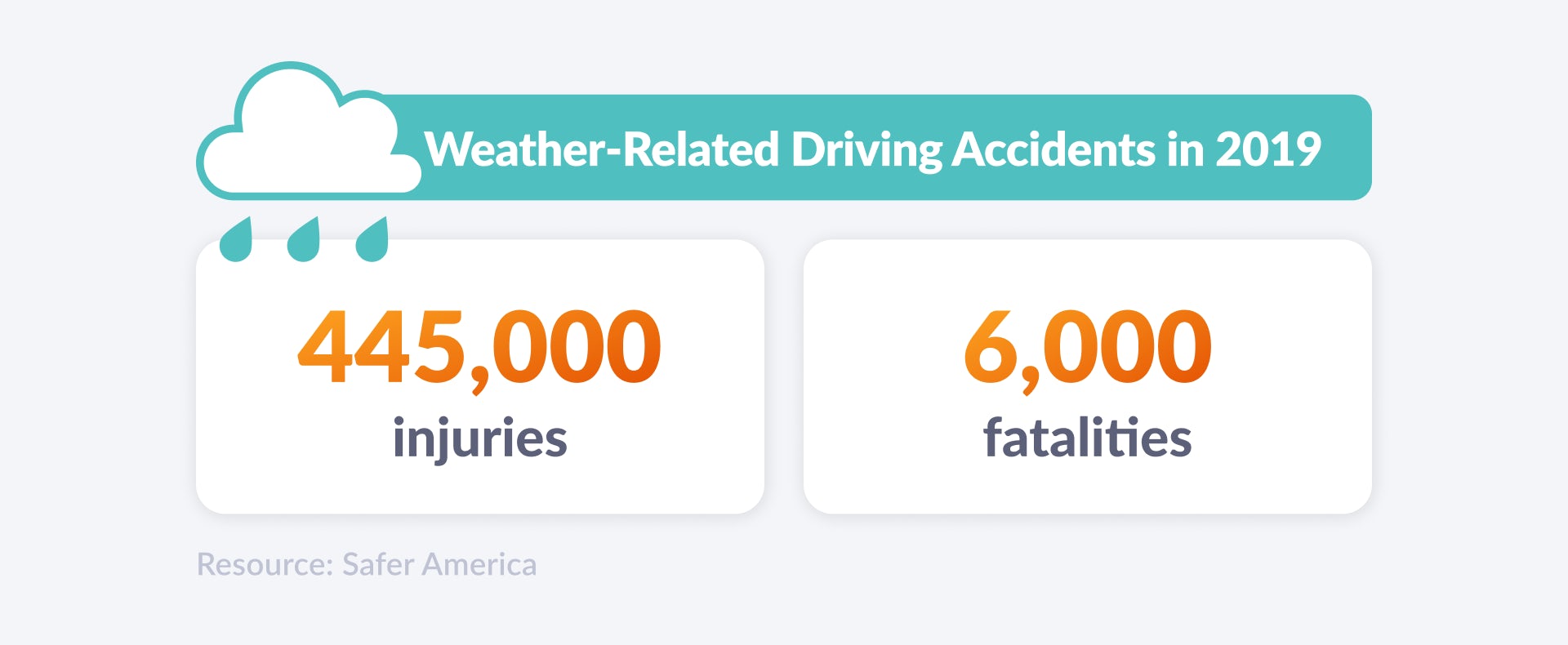
Deciding not to drive in heavy rain isn’t just safe, it’s beneficial for you. By staying off the road, you’re not stuck in traffic or navigating in poor visibility and slippery conditions. Overall, this option helps to avoid any rain-driving stress at all.
2. Be Predictable
In rainy conditions, your driving should be as predictable as possible to others on the road. This means using your turn signals early to alert drivers about your next move. Keep a consistent speed and follow traffic rules diligently, as they are designed to create predictable patterns that all drivers can rely on.
3. Know Your Route
| Pavement | Environment |
| Roads are built with their local climate and weather factors in mind. For example, many southern roads are made with less asphalt density. This can make them look dry, but your tires can get slick and wet without you knowing. | Know which roads have or develop potholes in heavy rains so you can avoid them. Find alternate routes to your destination in case the roads get obstructed. |
4. Have an Emergency Bag in the Trunk
At a minimum, it should have a simple first aid kit, food and water for 3 days, a candle or solar blanket to protect from cold weather, a poncho or rain jacket in case of roadside breakdowns, and at least one season-appropriate set of clothes. Preferably, you also have the means to rent a room for the night if you get stranded.
5. Don’t Panic
Stress and nervousness surely affect your driving performance. You want to be mindful and watchful, and you need to be calm enough to react well if a situation unfolds.
6. Practice Ahead of Time
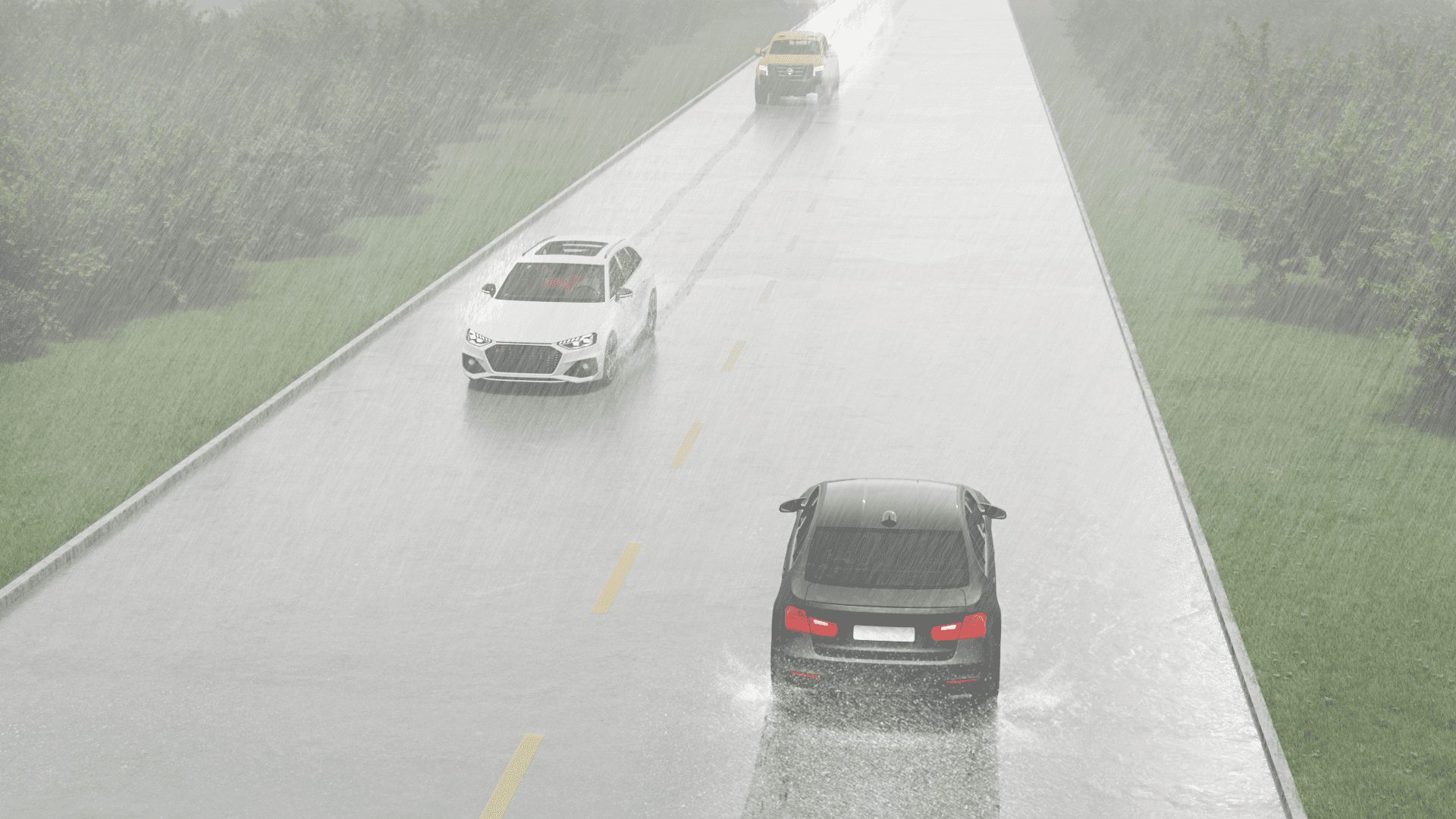
Many DMVs have defensive driving courses to help you prepare for different types of driving hazards. You can also review and test your knowledge with our state-specific DMV guides and practice tests.
What Should I Do If I Crash or Break Down in the Rain?
| Situation | Service to Contact | Actions While Waiting |
| Vehicle Breakdown | Roadside Assistance | Stay in the vehicle, set up warning signals like flares, keep an emergency blanket and water accessible. |
| Minor Accident (No Injuries) | Non-Emergency Police Line | Exchange information with other drivers, take photos,, fill out an accident report if needed. |
| Major Accident (Injuries Involved) | Emergency Services (911) | Provide first aid if trained, keep victims warm and calm, do not move anyone unless there’s immediate danger. |
| Flooding/Stuck in Water | Emergency Services (911) | If safe, stay in the vehicle, signal for help, do not exit the car into moving water. |
| Skidding Off Road | Roadside Assistance or 911 (if needed) | Stay with your vehicle, set up warning signals, and wait for help. Avoid standing on the roadside. |
| Electrical Failure | Roadside Assistance | Turn on emergency flashers, use a hand-crank charger or power bank to keep your phone charged. |
| Flat Tire in Heavy Rain | Roadside Assistance | Stay inside the car, especially if on a busy road. Set up flares or reflective triangles if safely possible. |
Master Safe Driving with Zutobi
Want to master more safe driving behaviors? Check out our program for bite-sized lessons, practice tests, and behind-the-wheel videos. You’ll even find lessons specific to your state’s laws and guidelines.

550+ exam-like questions
All you need to ace your test
Perfect for first-timers, renewals and senior citizens
Recommended articles
Ace your DMV test, guaranteed
Want to Be the Top School in Your Area?
- Simple & automated admin
- More time for teaching
- #1 learning materials for students
